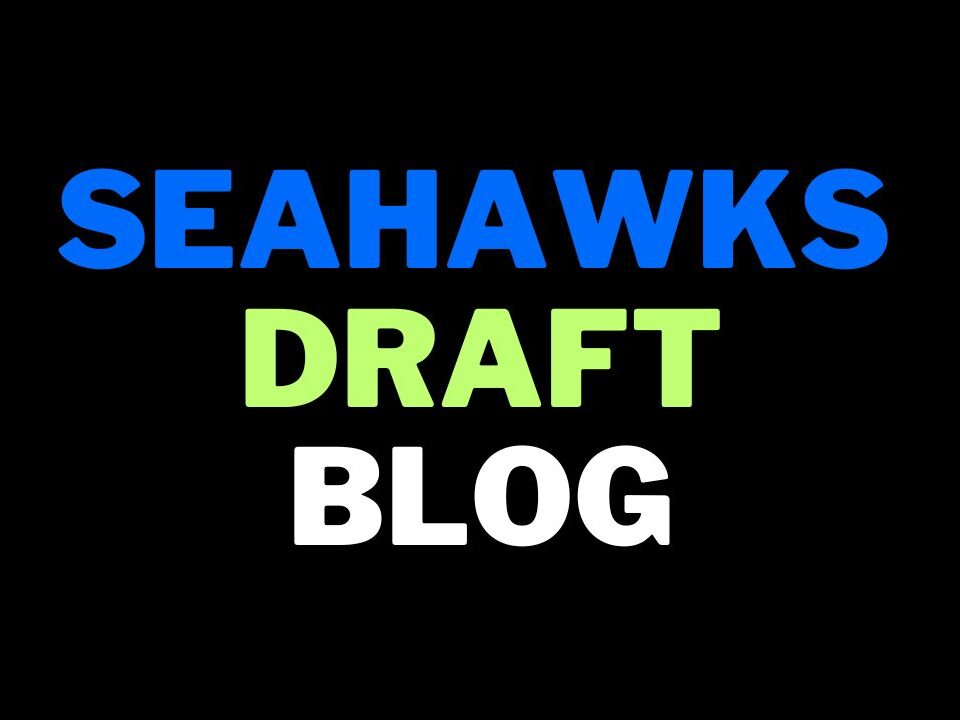As Seahawks evaluate a few veteran QB options (add Vince Young to list), they do plan to re-sign Josh Portis, cut late last November.
— Chris Mortensen (@mortreport) April 2, 2013
Page 335 of 440
QB Matt Flynn traded to @raiders for 2014 5th-round draft pick & conditional pick in 2015 draft shwks.com/6eqy
— Seattle Seahawks (@Seahawks) April 1, 2013
I don’t think it’s much of a coincidence that Seattle has approached Kam Chancellor about an extension a month before the 2013 draft. Doing so gives the front office either a chance to sign him to an extension, or get a preview of what might be a difficult, drawn out contract discussion. In the event that talks are not fruitful (and so far, the two sides seem far apart), it would make sense for Seattle to consider a strong safety prospect in this draft, particularly if one of good value falls to them.
Shawn Williams has some of the best tools of any 2013 safety prospect. He stands just a hair short of 6 feet tall at 213 pounds while running a brisk 4.46 and putting up 25 reps on the bench press. He had less fantastic results in agility drills, though they were still respectable.
Unfortunately, there isn’t much of Williams to go off of on youtube and the compilation above makes him look pretty lousy, to be frank. He gambles in coverage (and loses). He is a poor tackler that plays almost as if to avoid injury. He has very few positive plays and numerous negative ones. That said, Williams’ speed and size could hold some appeal to Seattle as Chancellor’s speed in coverage proved to be an issue at times last year.
As an isolated decision based purely on my grade from what you see above, I probably wouldn’t draft Williams, though Pete Carroll seems to gravitate towards special athletes in need of coaching help. That’s Shawn Williams in a nutshell. I don’t think Seattle will draft him early on, but if he slides on draft day I could see him gaining traction with the Seahawks around the 4th or 5th round.
… The Oakland Raiders select:
http://www.youtube.com/watch?v=bEwGbfY8rQ8
To date, Seattle has acquired and then started (at least one game) the following players at offensive tackle (numbers are from their combine measurements):
Tyler Polumbus: 6’7½”, 300
Breno Giacomini: 6’7⅛, 303
Paul McQuistan: 6’6⅛”, 312
Russell Okung: 6’5¼”, 307
James Carpenter: 6’4⅜”, 321
Frank Omiyale: 6’4¼”, 310
Only two of these six players stand under 6’5″. Of those two, Carpenter weighed 321 pounds (and has since ballooned well about that number). Omiyale compensated for his height with 36″ arms and a slightly above median weight (based on the 2013 tackle group). Omiyale has only played one season here (as a backup) and remains a free agent.
I mention this because David Bakhtiari (pronounced Bock-T-are-E) impressed the heck out of me when I watched his compilation vs. USC (above), and yet he stands just 6’4¼” and weighed in at just 299 pounds, the lightest out of 30 tackles at the combine. If Seattle drafted him, he’d be tied for the shortest tackle acquired during the current Seahawks regime, and he’d also be the lightest.
It might be a bit much to label Bakhtiari a “mauler”, but he has excellent hand placement, lightning quick feet, superb leverage and plays with a very high motor. He may not “destroy” blockers, but he consistently moves them. I was stunned to see that he only ran a 5.1 in the 40 yard dash, as he’s one of the best tackles in this draft class at attacking the second level. His combination of traits would be ideal in a pure zone, with enough power to work in our power zone system. Despite weighing just 299 pounds, Bakhtiari managed 28 reps on the bench press. Only 4 out of 30 tackles posted better during the combine.
While Bakhtiari is short for the position, his 34″ arms are adequate for either tackle spot. While he doesn’t handle the bull rush quite as well as guys like Menelik Watson and Jordan Mills do, he handles pressure around the edge better. He played left tackle for Colorado and looks like a natural pass protector.
He’s well spoken and comes across as highly intelligent in this press conference from last September. Some scouting departments give this fairly significant weight as offensive line can require a lot of learning/quick thinking and by extension, intelligence. He displays maturity beyond his years and knows exactly what he’s signing up for by pursuing the NFL.
There aren’t a ton of 6’4″ starting tackles in the NFL, so invariably when you find a 6’4″ tackle prospect the automatic comparison is Jordan Gross of the Carolina Panthers, a two-time pro-bowler. Bakhtiari makes a stronger case than most, however.
Gross (at the 2003 combine) is on the left, Bakhtiari on the right:
Height: 6’4½” / 6’4¼”
Weight: 300 / 299
Arm Length: 33¼” / 34″
40 time: 5.05 / 5.10
Bench Press: 28 / 28
Gross didn’t just manage to play tackle in the NFL, he’s been a left tackle for ten NFL seasons, and was a major contributor to Carolina’s turnaround in the running game during that period.
A three year starter for Colorado, Bakhtiari declared as an underclassman, perhaps motivated by Colorado’s 1-11 season in 2012. He played left tackle the last two seasons. As a freshman, he played right tackle across from then left tackle Nate Solder. Bakhtiari never played inside, but given his size, quickness, work ethic and intelligence, it’s widely believed that he could transition inside. According to Bakhtiari, he’s been approached by teams asking him about playing guard or even center, despite his lack of experience playing those positions. That potential for versatility will definitely help his case with Seattle.
Jordan Gross was the 8th overall pick in the 2013 draft, but David Bakhtiari isn’t even listed on Tony Pauline’s top 160 or even ranked in NFLDraftScout’s database. I’d personally feel very comfortable giving Bakhtiari a 2nd round grade based on that compilation against USC, but he might not leave the board until the 5th or 6th round. He might offer a great value option should the Seahawks opt to address tackle later in the draft.
The 2013 draft class is among the better offensive line classes I’ve ever seen. An offensive tackle will (deservedly) go #1 overall. There are three offensive tackles that on talent deserve to be top ten picks. There are two guards that will probably end up being selected in the top twenty. It’s as crowded a start as any, and only so many teams will consider offensive line a top priority.
In a much weaker environment, Menelik Watson would be the stereotypical draft hype guy that goes way sooner than he should based on his athleticism, as Jason Smith did in 2009. Unfortunately for him, the high volume of superior options pushes Watson’s stock down to it’s rightful place: somewhere between the end of the first round and the end of the second.
Seattle is always looking for players that could improve from coaching and have the athleticism to dominate if they achieve their full potential. They have one of the best talent developers in the business with Tom Cable. Watson fits both about as well as he possibly could.
Watson never played American Football in high school. That’s because he grew up in Manchester, England. He played soccer instead. Wanting to escape the tough streets from where he came, he sought to pursue a professional athletic career. Problem was, he wasn’t sure what that would be. At first he tried his hand at basketball for Marist’s basketball program. He’d later attempt a switch to boxing. People he met often assumed he was an offensive line recruit, and that idea eventually led him to try out for a small school football program, having never played the position. That was in 2011.
Funny enough, the college that gave him a shot was Saddleback college in California, the very same for which Kyle Long (who transferred to Oregon) was the starting left tackle. Long faced Watson during practices and recognizing his talent, urged the staff to start him at right tackle. Watson got the job and caught on in a big way. He would transfer to Florida State the next season.
Watson has a great story, though it highlights the reason why he might conceivably slip into the second round. He never played football before 2011, and he only played one season against high level competition. How high of an investment do you make on a player who very well might not be ready for a year or two to compete in the NFL? Teams that need a tackle bad enough to select him early presumably would want him to start right away.
Seattle is in a fairly unique situation. Breno Giacomini is a good player that was bogged down by penalties for much of the last two seasons. The team might want to plan for life after Giacomini, but I don’t at all sense that they are uncomfortable with him starting. Whichever tackle Seattle does draft, it seems unlikely that he’d play much in 2013. The lack of experience disincentive could be strong for other needy teams, but it is almost non-existent for Seattle, especially considering Tom Cable’s track record with developing lineman who were far less gifted than Watson is.
It’s hard to judge Watson on face value from his game compilations. He’s so new to the game that you can’t be sure which flaws to be fearful of and which to brush off.
What I can say with more certainty is that I love how quick his feet are for a 320 pounder. I also love how he keeps his shoulders back when delivering his punch in pass protection. His arms measured 34 inches, which is basically average for a tackle, but his results in pass protection were as if he had 35 or 36 inch arms. Keeping the shoulders back and delivering a strong punch inside is a compensating factor for arm length. Defenders had no chance when they attempted to bull rush him, and his foot speed allowed him to keep pace when opponents attempted to beat him around the corner. As a pass protector, he reminds me an awful lot of Russell Okung when I scouted him back in 2010.
Watson has obvious power in the running game, but ironically he struggles to maintain his hands during drive blocks despite using his hands very well in pass protection. He’ll often slide off run blocks then stand up and stop, an obvious sign that he’s not sure what to do. He’s fast to the second level despite his size. This coupled with his quick feet led many to speculate that Watson would light up the combine and shoot himself out of mid round obscurity and into the first round.
Except he didn’t. In fact, Watson’s 40 time, 3-cone, and short shuttle were among the worst for the offensive tackle group. This despite shedding ten pounds from his reported 2012 playing weight. He also measured a slightly disappointing 6’5⅛” after being widely reported at 6’6″ or 6’7″ prior to the combine. Of course, height isn’t really a major deal, as John Moffitt, JR Sweezy, James Carpenter, and Russell Okung all stand 6’5″ or less. Tom Cable’s mentor, Alex Gibbs, actually preferred his tackles to be exactly 6’5″. On the whole though, Watson had one of the more disappointing performances at the 2013 combine, especially for a guy that is banking on his athleticism to get drafted.
Funny thing is, I’m not sure GM’s care how he did. All indications from excellent sources compiled at outlets such as Rotoworld.com suggest that Watson’s first round stock has actually solidified post-combine instead of deteriorating. On the other hand, the sourced Tony Pauline only has Watson 67th on his post-combine rankings.
I suspect that Watson is unlikely to reach the #56 pick, and he might not even come that close. But if he does make it, I would be surprised if Seattle didn’t draft him. He would be one of the very best players available, he fits one of the team’s biggest positional draft targets, and he is a great fit for the Seahawks roster situation, Tom Cable’s profile, and the Seahawks’ general draft philosophy. Few players would thrill me more to see at the 56th overall pick. I suspect the Seahawks would be thrilled to have a chance at his talent as well. It wouldn’t even surprise me if Seattle traded up targeting him.
The Seahawks and Raiders have in fact agreed to draft-pick compensation on a tentative trade to send Matt Flynn to Oakland. Deal’s close.
— Albert Breer (@AlbertBreer) March 29, 2013
So it appears the Matt Flynn era (can we call it an ‘era’?) is coming to a close. Various reports (see above) have a deal with Oakland in the works. It all rests on Carson Palmer now. He is scheduled to take up $15m against the cap this year. Cutting him will save $6m. Inheriting Flynn’s contract via trade will cost the Raiders $5.25m. So it makes sense that they’d try one last time to get Palmer to negotiate before making a move. If he refuses, they have little option but to cut him.
The Raiders can’t carry Palmer — who has zero shot to succeed on that team — at $15m. Trading for Flynn gives them a veteran stop-gap for two years while they rebuild. Unfortunately for Flynn, he couldn’t be walking into a worse situation. Russell Wilson, Andrew Luck and Robert Griffin III would struggle to lift this ailing franchise.
Compensation remains unknown, although don’t get your hopes up. If the trade is completed, it won’t be a blockbuster. Oakland went into the 2012 draft with no picks in the first four rounds. They were given compensatory picks in round three and four, otherwise new GM Reggie McKenzie would’ve been waiting until round five to start a titanic rebuild. He’s already without a second rounder this year as part of the Palmer trade, so he’s not going to be giving up more high picks.
I suspect the most likely scenario is a late rounder as we saw with Tarvaris Jackson last year, a conditional pick in 2014 based on performance or a flipping of picks. For example — Seattle and Oakland swap fourth rounders.
This was an interesting piece by Yahoo’s Jason Cole, which perhaps explains why demand for Flynn’s services has been lukewarm since he left Green Bay. Cole: “McKenzie (Oakland GM), a former Packers executive, knows Flynn well from his days as a backup in Green Bay. However, the scouting report among former Packers executives is that Flynn’s lack of arm strength will eventually be exposed by opposing teams.”
What about a replacement in Seattle? For me, you just draft a guy. It’s what most teams do. New Orleans had UDFA Chase Daniels backing up Drew Brees until he recently switched to Kansas City. Green Bay had 7th rounder Matt Flynn backing up Aaron Rodgers, and then went with UDFA Graham Harrell. New England had 7th rounder Matt Cassel, then UDFA Brian Hoyer and now third round pick Ryan Mallett backing up Tom Brady. For years Peyton Manning was backed up in Indianapolis by 6th rounder Jim Sorgi.
Seattle might as well do the same.
There are quarterbacks in this class worth a look in the later rounds or in UDFA. Sean Renfree, Colby Cameron, Zach Dysert, Alex Carder, B.J. Daniels. They could go for their own version of Mallett in round three if Tyler Bray is still on the board. Let’s also remember that John Schneider was part of a Green Bay front office that drafted Brian Brohm in round two despite having Brett Favre and Aaron Rodgers on the roster already. So don’t rule out a quarterback being taken at #56. The cost per year would be between $600k-1.2m over four years. Essentially, great value with the upside of a possible Kevin Kolb-type trade down the line.
It’s safe to assume they’ll have an open competition in camp for the backup role. This could include a couple of rookies and a veteran on the minimum salary. Tyler Thigpen could be a good shout — a personal favourite after I saw him live for Kansas City in 2008.
If or when Flynn is traded, it’ll be a relief to have a situation where we aren’t talking about the backup quarterback any more. Two years of chatter about Charlie Whitehurst followed by a year of Matt Flynn is enough. The New Orleans media and fans never gave this much attention to Chase Daniels. Roll on the day where Seattle’s backup is simply the guy who models the latest range of caps and doesn’t earn a relative fortune to hold a clipboard.
Update
It appears the Raiders want Flynn to take a pay cut. As the Tweet below kind of spells out, I wouldn’t be optimistic about any relatively high picks being involved here.
Matt Flynn is set to make about same $ as Matt Hasselbeck. Raiders want Flynn to take pay cut. Shows how they see him.
— gregg rosenthal (@greggrosenthal) March 29, 2013
http://www.youtube.com/watch?v=3Qw0GN4lrKc
Once considered among the best corners in the 2013 draft, Jonathan Banks’ draft stock might be in trouble after clocking a 4.61 in the forty at the combine. Consider that just three other corners ran in the 4.6s, and of those three only Cal’s Marc Anthony is expected to be drafted (in the 7th round). General managers tend to have a “cutoff point” system, which is part of the reason the Seahawks got Russell Wilson in the 3rd round last year. You’d have to think that cutoff point for corner speed would be faster than a 4.61.
Since we don’t know what the actual NFL draft boards will look like, we can only hazard a guess as to how much his stock will suffer. Tony Pauline of Sports Illustrated has excellent NFL connections and had the most accurate big board last year. I don’t know how good his connections are this year, but he now has Jonathan Banks all the way down at #63, which potentially puts him in play for Seattle at #56. I think Seattle is pretty unlikely to draft a corner this early, but Banks is a player worth looking into given Seattle’s scheme and how it de-emphasizes corner speed.
Banks has excellent tape. I think he made a mistake running the forty at the combine. You wouldn’t suspect speed problems based on what he did on the field. Had he forced teams to grade him just from his tape, I’m pretty sure he’d be a mid-first rounder. In three games I don’t recall him ever being burned by a receiver even once.
Mississippi State used Banks in many ways. They had him blitz quite often and even lined him up as an outside linebacker a few times. He even returned punts. I know it’s cliche, but Banks really is a “football player” in the truest sense. No matter how Mississippi State used him, Banks looked natural in every task given.
One of the things that stands out about Banks is how quick his feet are. He can plant and explode with good short area quickness. He chops his feet very well and is tough for ball carriers to dodge in the open field. His backpedal is pretty to look at. He keeps his hips down too.
When Banks is allowed to face the quarterback, he shows excellent ball skills, hands, and return ability after the interception.
I should clarify something I said earlier- when I say Banks has good short area quickness, I really mean he has a quick first step or two. If he has to close a five to ten yard gap, his closing speed appears to be below average. That can be a bit of a problem in coverage sometimes- he’s not able to make the kinds of plays that require closing a moderate amount of space in very little time. Banks could end up being limited in zone coverage, especially when compared to alternatives like Robert Alford.
Banks is a big hitter and usually a good tackler, though he often goes for the hit instead of wrapping up, and in one instance that led to a touchdown given up on a kickoff.
I think Seattle will like Jonathan Banks a lot. Not only do they value speed less at corner, but they value long arms a lot more than most teams do- viewing arm length as a compensating factor for speed. Jonathan Banks has 33⅞” arms- that’s enough arm length to play offensive tackle. Demetrius McCray of Appalachian State has the same arm length, but no other corner comes within even a full inch of arm length. When considering the arm length, Seattle might view Banks as effectively having the coverage ability of a 4.55 player. Banks is a physical player the defends the run well and provides added value as a blitzer. Pete Carroll likes to blitz his corners.
I think a late round player like McCray is more likely to be a Seahawk than Banks for many reasons, but if the Seahawks love Banks polished skillset and feel they can afford to draft whatever they want in the late 2nd round, Banks at #56 could be a possibility.

This could be the end of Alan Branch in Seattle
The elusive defensive tackle is signed. Tony McDaniel has penned a one-year contract with the Seahawks, adding some much needed interior depth.
Whether he starts in Seattle remains to be seen. Alan Branch didn’t just feature as a three technique, he also doubled up as Red Bryant’s backup. McDaniel might carry a similar dual role. But it might be a dual backup role. He was after all merely a rotational cog in Miami.
He could start, though. At 6-7 and 305lbs, he’s got the kind of size they seem to like at tackle. The Seahawks have to become tougher to run against. They also have to find more creative ways to rush the passer. Seattle fields a fine defense, but these are two big areas where they can get even better.
McDaniel has some previous baggage as noted in an earlier piece:
He’s had a couple of ugly run-ins with the police. In January 2005 he assaulted a fellow Tennessee student during a game of pick-up basketball. Edward Goodrich suffered four broke bones in the incident and needed a metal plate inserting into his face to repair the injuries. McDaniel pleaded guilty to misdemeanor assault.
Four years later he was arrested on the charge of domestic battery against his girlfriend. The charges were later reduced to disorderly contact, another misdemeanor. He was sentenced to six months probation. He was also required to attend counseling and served a one-game suspension issued by the NFL.
Let’s hope those issues are beyond McDaniel.
It’s worth pondering whether this signing was a direct result of a snub elsewhere. Vaughn Martin (6-4, 327lbs) was on a plane destined for Seattle. Then he got off the plane and signed for the Miami Dolphins:
“I was actually on the plane to Seattle this morning when I got off the plane to come over here back to Davie and sign.”
Martin is a former fourth round pick who left the San Diego Chargers after three seasons in the AFC West.
The door is still open for the Seahawks to draft a defensive tackle. However, given their penchant for guys who are 6-4 or taller and around 310-325lbs, there’s not a lot of obvious options this year. Montari Hughes could be the most fitting but carries an even bigger list of red flags than McDaniel. It might be that next year the Seahawks go into the draft still searching for a long term fit at defensive tackle.
Raiders interested in Matt Flynn?
Matt Flynn continues to be linked with other teams. Mike Silver is reporting “legitimate interest” from the Raiders, but not Jacksonville:
A league source said the Raiders have legitimate interest in acquiring Flynn, who could likely be pried from Seattle for as little as a fourth-round pick. (Another source said the Jacksonville Jaguars, who according to a CBSSports.com report are also interested in Flynn, have little inclination to try to swing a trade.)
Silver also notes a financial stumbling block that could be a turn-off. If the Raiders cut Carson Palmer, they’ll save around $6m against their cap. Acquiring Flynn would take up around $5.25m. Given the trade compensation that would also be required and the salary cap black hole that Oakland finds itself in, a deal still seams a long way off. You’d essentially be swapping Palmer for Flynn for around $750k in savings, while also giving up draft stock.
It really depends how determined the Raiders are to move on from Palmer and how much they want a veteran replacement.
John Clayton has touted the idea of swapping picks, an idea we discussed a couple of months ago on this blog. Flipping third round picks would be worth 100 points, or the same as a fourth round selection. Oakland has the fourth pick in round three, while Seattle has the 25th selection. This would allow the Raiders to avoid losing any picks after the decimation of their 2012 draft.
This remains Seattle’s best chance to move Flynn, which they clearly wish to do. They’ll save $3.25m against the cap if they work out a deal. Nothing is likely to happen though until Palmer is cut. But that appears to be a formality at this stage.
Elsewhere…
Albert Breer has a piece with Darrell Bevell discussing the acquisition of Percy Harvin. Bevell: “My mind started racing… You start thinking about all the things you can do with a player like that. And now the hard part is to harness that talent.”

USC's Matt Barkley had his pro-day today
Time for this week’s mock. I think you’ll like Seattle’s pick at #56 this week…
It’s another projection that includes trades. Here’s a run down of all the deals in round one:
Buffalo (#8) trades with Jacksonville (#2) for a 2nd round pick + 2014 2nd rounder
With Chris Mortensen repeatedly linking Oakland to Geno Smith, this could force potential suitors to act. Buffalo GM Buddy Nix said during the 2012 season that it could be time to move up and get a quarterback. I suspect Smith will go second overall, it’s just a case of which team moves up. Jacksonville is probably a willing trader.
Miami (#12) trades with Philadelphia (#4) for a 2nd round pick
The Dolphins have two second round picks because of the Vontae Davis trade with Indianapolis. They allowed Jake Long to walk. For a franchise that’s been pretty aggressive so far in free agency, I suspect they’ll consider making a move up the board to get at the top left tackles. They’d still have a second round pick to go after another edge rusher or cornerback. Philly moves down before drafting Tavon Austin.
Dallas (#18) trades with San Diego (#11) for a 3rd round pick
Jerry Jones loves to trade up when he’s identified ‘his guy’. Sheldon Richardson also happens to be Monte Kiffin’s ‘guy’, given how close he came to prising him away from Missouri during a successful JUCO career in California. San Diego’s been pretty passive this off-season so far and despite their desperate needs on the offensive line, if they don’t move up there’s no obvious solution here. They might as well move down to accumulate picks.
Chicago (#20) trades with Tampa Bay (#13) for a 4th round pick + 6th round pick + 2014 3rd rounder
The Bears don’t have a ton of needs but they can’t be totally satisfied with their offensive line even after signing Jermon Bushrod. Trading up for a guard is uncommon, but Jonathan Cooper is up there with Chance Warmack and Mike Iupati as players worth taking in this range. Tampa Bay knows it can get a cornerback at #20.
Atlanta (#30) trades with Green Bay (#26) for a 4th round pick
With Bjoern Werner falling into the 20’s, Atlanta trades up to get an impact pass rusher. The value at #26 isn’t great for Green Bay’s needs so I’d guess they’ll be willing to move down.
Philadelphia (#35) trades with New England (#29) for a 4th round pick
The Eagles could revolutionise their offense here. Cornerback is a concern — and a big one. But Chip Kelly is going to want to get his offensive vision rocking. They move up to secure a quarterback for the long haul. And with another second round pick to come after trading down, you’re looking at an offense that includes E.J. Manuel at quarterback, an X-factor playmaker in Tavon Austin, two speedy receivers in DeSean Jackson and Jeremy Maclin, LeSean McCoy at running back and Kyle Long joining Jason Peters on the offensive line. Scary athleticism.
Arizona (#38) trades with Baltimore (#32) for a 5th round pick
Last year Tampa Bay pulled off a cheap trade with Denver to make sure they got Doug Martin. Arizona could pull a similar trick to get their quarterback here.
Seattle’s pick in round two is an interesting scenario. Eddie Lacy is a terrific running back but his off-season has been a veritable car crash. He made an ill-advised joke about adding weight during the off-season due to a mediocre work ethic. He’s got injured. And with less than a month to go to the draft, he’s still not worked out for scouts. When he does, he’s probably not going to blow anyone away.
For a few weeks now I’ve had Lacy going in round one. Yet there’s enough depth at running back to force a dramatic fall here. After all, teams saw what Washington did with Alfred Morris last year, plus what Houston has done with Arian Foster. So there might not be a furious scramble for Lacy. There’s going to be value to had at the position from round three onwards.
The Seahawks don’t have many needs. They also have Robert Turbin who was fine as a rookie. I just think this team would thrive on being able to use a double-headed monster of Lynch and Lacy. Relentless power running. Count this projection as another example of Seattle having the freedom to do what they want with the #56 pick.
To make up for yesterday’s ‘Eagles’ article, I’ve included a full round three.
Don’t forget — We’ve teamed up with NFLSHOP.com so you can get hold of a new Percy Harvin jersey. So if you want to support the Seahawks on gameday with an online purchase, do it through Seahawks Draft Blog!
First round
 |
#1 Luke Joeckel (T, Texas A&M) This still seems like the most likely pick. |
 |
#2 Geno Smith (QB, West Virginia) Buddy Nix said it was time to move up and get their quarterback. |
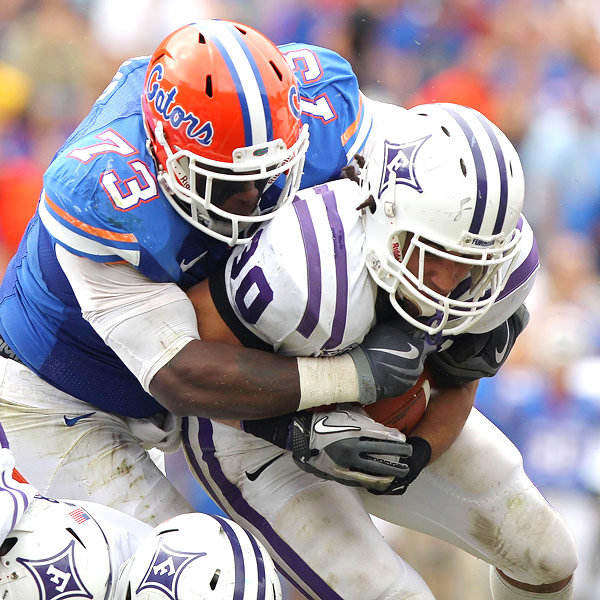 |
#3 Sharrif Floyd (DT, Florida) They need to build a foundation. They’ve created room for this type of pick. |
 |
#4 Eric Fisher (T, Central Michigan) Having spent an off-season providing an arsenal for Ryan Tannehill, they have to be able to protect him. Time to move up. |
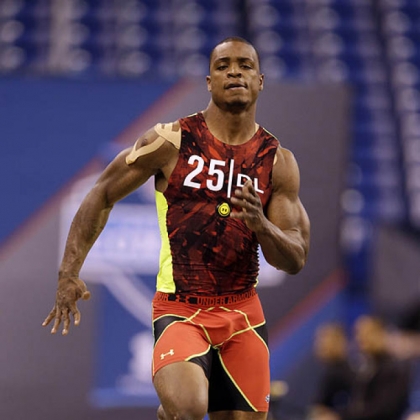 |
#5 Dion Jordan (DE, Oregon) He might have more upside than anyone else in the draft. |
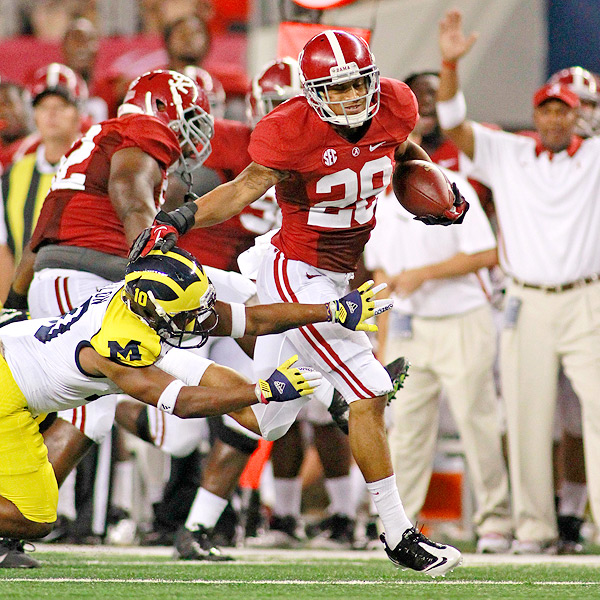 |
#6 Dee Milliner (CB, Alabama) They might choose to invest in a partner for Joe Haden. |
 |
#7 Lane Johnson (T, Oklahoma) They need to decide if they can afford to wait around for a quarterback. |
 |
#8 Matt Barkley (QB, USC) Gus Bradley worked with Pete Carroll for three years. He’ll know the true value of Matt Barkley. |
 |
#9 Chance Warmack (G, Alabama) Rex Ryan’s future beyond 2013 is unclear, so go back to running the ball and just draft the best player on the board. |
 |
#10 Ziggy Ansah (DE, BYU) Someone is likely to take a chance on Ansah in the top-ten. |
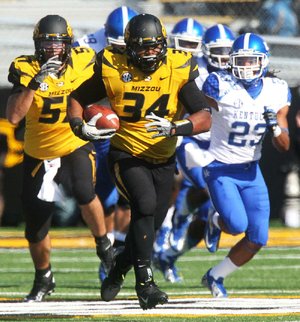 |
#11 Sheldon Richardson (DT, Missouri) Jerry Jones is not afraid to move up. Monte Kiffin recruited the heck out of this guy. |
 |
#12 Tavon Austin (WR, West Virginia) Chip Kelly gets Philly’s answer to D’Anthony Thomas. |
 |
#13 Jonathan Cooper (G, North Carolina) You don’t usually trade up for a guard. Cooper is worth it. |
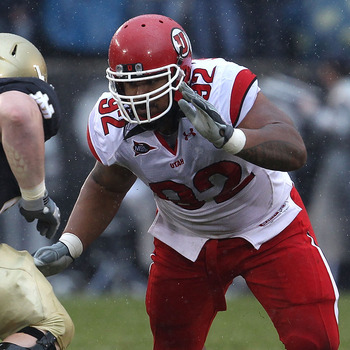 |
#14 Star Lotulelei (DT, Utah) This fills perhaps their biggest need. |
 |
#15 Datone Jones (DE, UCLA) They have all kinds of need on defense. I just have a hunch Datone Jones will go earlier than expected. |
 |
#16 Cordarrelle Patterson (WR, Tennessee) They want weapons on offense. Here’s a weapon. |
 |
#17 Kenny Vaccaro (S, Texas) The best player available at a position of need. |
 |
#18 Xavier Rhodes (CB, Florida State) After trading down, San Diego adds a much needed corner. |
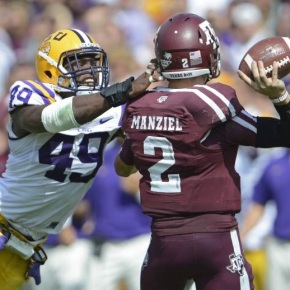 |
#19 Barkevious Mingo (DE, LSU) He’d add a new dynamic to the Giants defense. |
 |
#20 Blidi Wreh-Wilson (CB, Connecticut) I just have a hunch there will be teams who rate this guy very highly. |
 |
#21 D.J. Fluker (T, Alabama) I’m not a fan personally, but then I was never really a fan of Andre Smith either. |
 |
#22 Alec Ogletree (LB, Georgia) They need an outside linebacker. |
 |
#23 Desmond Trufant (CB, Washington) With a run on cornerbacks under-way, Minnesota gets in on the act. |
 |
#24 Justin Pugh (G, Syracuse) Interior offensive line is the biggest need in Indy. |
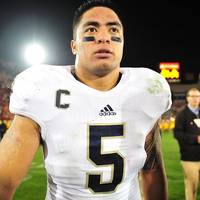 |
#25 Manti Te’o (LB, Notre Dame) Rick Spielman has already hit on two other Notre Dame players. Will he try and make it a hat-trick? |
 |
#26 Bjoern Werner (DE, Florida State) The Falcons move up to get an impact pass rusher. |
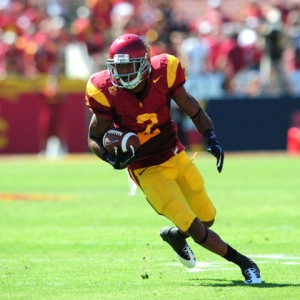 |
#27 Robert Woods (WR, USC) The Texans could look for a playmaker. |
 |
#28 Tyler Eifert (TE, Notre Dame) Keep adding to that arsenal. |
 |
#29 E.J. Manuel (QB, Florida State) I’m not much of a fan, but imagine him in an offense with LeSean McCoy, Tavon Austin, DeSean Jackson and Jeremy Maclin. |
| #30 Keenan Allen (WR, California) After losing Greg Jennings and Donald Driver, Allen could be the guy here. |
|
 |
#31 Matt Elam (S, Florida) This would be a scary pick for the NFC West. |
 |
#32 Ryan Nassib (QB, Syracuse) After watching Philly trade up for E.J. Manuel, the Cardinals quickly work on a deal to get their quarterback. |
Second round
#33 Jacksonville – Corey Lemonier (DE, Auburn)
#34 San Francisco- Tank Carradine (DE, Florida State)
#35 New England – DeAndre Hopins (WR, Clemson)
#36 Detroit – Menelik Watson (T, Florida State)
#37 Cincinnati – Jonathan Cyprien (S, Florida International)
#38 Baltimore – Arthur Brown (LB, Kansas State)
#39 New York Jets – Zach Ertz (TE, Stanford)
#40 Tennessee – Sylvester Williams (DT, North Carolina)
#41 Jacksonville – Johnthan Banks (CB, Mississippi State)
#42 Philadelphia- Kyle Long (T, Oregon)
#43 Tampa Bay – Khaseem Greene (LB, Rutgers)
#44 Carolina – Justin Hunter (WR, Tennessee)
#45 San Diego – Johnthan Hankins (DT, Ohio State)
#46 St. Louis – Denard Robinson (RB, Michigan)
#47 Dallas – Travis Frederick (C, Wisconsin)
#48 Pittsburgh – Jarvis Jones (OLB, Georgia)
#49 New York Giants – Jesse Williams (DT, Alabama)
#50 Chicago – Kevin Minter (LB, LSU)
#51 Washington – D.J. Swearinger (S, South Carolina)
#52 Minnesota – Kawann Short (DT, Purdue)
#53 Cincinnati – Jonathan Franklin (RB, UCLA)
#54 Miami – Jamar Taylor (CB, Boise State)
#55 Green Bay – Terron Armstead (T, Arkansas Pine-Bluff)
#56 Seattle – Eddie Lacy (RB, Alabama)
#57 Houston – Larry Warford (G, Kentucky)
#58 Denver – Phillip Thomas (S, Fresno State)
#59 New England – Dallas Thomas (G, Tennessee)
#60 Atlanta – D.J. Hayden (CB, Houston)
#61 San Francisco – Gavin Escobar (TE, San Diego State)
#62 Baltimore – Jamie Collins (OLB, Southern Miss)
3rd round
#63 Kansas City – Ryan Swope (WR, Texas A&M)
#64 Jacksonville – Sio Moore (LB, Connecticut)
#65 Detroit – Markus Wheaton (WR, Oregon State)
#66 Oakland – Alex Okafor (DE, Texas)
#67 Philadelphia – Logan Ryan (CB, Rutgers)
#68 Cleveland – Tyler Bray (QB, Tennessee)
#69 Arizona – Brian Winters (G, Kent State)
#70 Tennessee – Robert Alford (CB, SE Louisiana)
#71 Buffalo – Quinton Patton (WR, Louisiana Tech)
#72 New York Jets – Mike Glennon (QB, NC State)
#73 Tampa Bay – Darius Slay (CB, Mississippi State)
#74 San Francisco – John Jenkins (DT, Georgia)
#75 New Orleans – John Simon (DE, Ohio State)
#76 San Diego – Jordan Mills (T, Louisiana Tech)
#77 Miami – Damontre Moore (DE, Texas A&M)
#78 St. Louis – Le’Veon Bell (RB, Michigan State)
#79 Pittsburgh – Terrance Williams (WR, Baylor)
#80 San Diego – Brian Schwenke (C, California)
#81 New York Giants – Jordan Poyer (CB, Oregon State)
#82 Miami – Stepfan Taylor (RB, Stanford)
#83 Minnesota – Steadman Bailey (WR, West Virginia)
#84 Cincinnati – David Amerson (CB, NC State)
#85 Washington – Jordan Reed (TE, Florida)
#86 Indianapolis – Montee Ball (RB, Wisconsin)
#87 Seattle – Brennan Williams (T, North Carolina)
#88 Green Bay – Eric Reid (S, LSU)
#89 Houston – Tyler Wilson (QB, Arkansas)
#90 Denver – Brandon Williams (DT, Missouri Southern)
#91 New England – Marc Anthony (CB, California)
#92 Atlanta – Bennie Logan (DT, LSU)
#93 San Francisco – Ace Sanders (WR, South Carolina)
#94 Baltimore – Shamarko Thomas (S, Syracuse)
#95 Houston – Travis Kelce (TE, Cincinnati)
#96 Kansas City – Baccari Rambo (S, Georgia)
#97 Tennessee – Oday Aboushi (T, Virginia)
No defensive tackle? I suspect we might see a signing to fill this role before the draft. I found this interesting:
Free agent DT Alan Branch has fired CAA as his agency and signed with Blake Baratz (@blakebaratz )
— Jason La Canfora (@JasonLaCanfora) March 27, 2013
